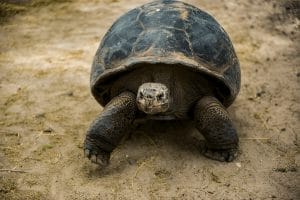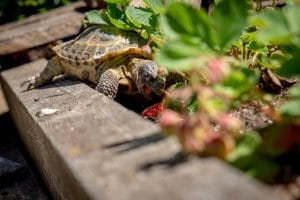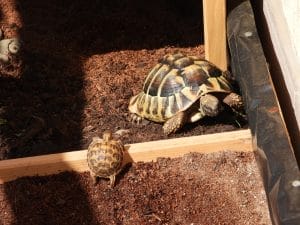Testudo kleinmanni (Egyptian Tortoise)
Home > Turtle Database > Testudo kleinmanni (Egyptian Tortoise)

The Egyptian Tortoise (Testudo kleinmanni) is one of the smallest tortoise species in the world, adapted to arid desert environments. This critically endangered species is known for its pale coloration, which helps it blend into sandy habitats and reflect heat.
Native To These Regions
Egypt, LibyaNative Turtle Species Map – Find Turtles by Region
Scientific Classification
Kingdom: Animalia
Phylum: Chordata
Class: Reptilia
Order: Testudines
Family: Testudinidae
Genus: Testudo
Species: T. kleinmanni
Common Names
Egyptian Tortoise
Leith’s Tortoise
This Hilarious Turtle Book Might Know Your Pet Better Than You Do
Let’s be real—most turtle care guides feel like reading a textbook written by a sleep-deprived zookeeper.
This one’s not that.
Told from the snarky point of view of a grumpy, judgmental turtle, 21 Turtle Truths You’ll Never Read in a Care Guide is packed with sarcasm, sass, and surprisingly useful insights.
And hey—you don’t have to commit to the whole thing just yet.
Grab 2 free truths from the ebook and get a taste of what your turtle really thinks about your setup, your food choices, and that weird plastic palm tree.
It’s funny, it’s honest, and if you’ve ever owned a turtle who glares at you like you’re the problem—you’ll feel seen.
Identification
Description
The Egyptian Tortoise has a small, oval-shaped shell that rarely exceeds 5 inches in length. Its carapace is smooth and light yellow to tan, providing camouflage in sandy environments. The plastron is usually pale with dark triangular markings near the edges. Its limbs are short and sturdy, with a pale yellow or cream coloration that matches its shell.
Sexual Dimorphism
Females are slightly larger than males, reaching up to 5 inches, while males rarely exceed 4 inches. Males have a longer tail and a more concave plastron, while females have a flat underside to accommodate egg-laying.
Check more turtles from the Testudo genus
Native Origin and Distribution
Geographical Range
Historically found in Egypt, Libya, and parts of Israel, its population has declined drastically. Today, wild populations are extremely limited, mostly surviving in protected areas of Libya and small parts of Israel.
Preferred Habitat
The Egyptian Tortoise thrives in arid desert environments with sparse vegetation. It prefers sandy or rocky terrains with scattered shrubs, where it can find shelter from extreme temperatures.
Behavior
Feeding Habits
This tortoise is herbivorous, feeding primarily on dry grasses, leaves, and flowers. Due to its desert habitat, it obtains most of its water from food rather than drinking.
Predators
Birds of prey, foxes, and wild dogs are natural predators. Young tortoises are particularly vulnerable due to their small size and soft shells.
Reproduction
Breeding Season
Mating occurs in spring and early summer, often triggered by seasonal temperature changes.
Reproductive Method
Females lay 1-3 eggs per clutch, typically burying them in sandy soil for incubation. The eggs hatch after 90-120 days, with hatchlings emerging during cooler months.
Conservation
Extinction Status
Critically Endangered, with wild populations in severe decline due to habitat destruction and illegal collection.
Threats
Urban expansion, agriculture, and overgrazing by livestock have destroyed much of its natural habitat. Additionally, the pet trade has drastically reduced wild numbers, as this species is highly sought after despite legal protections.
Conservation Measures
Strict trade bans and legal protections exist, but illegal collection continues. Conservation efforts focus on habitat restoration, breeding programs, and raising awareness to prevent poaching.
Economic Importance
This species has minimal economic impact but is highly valued in the illegal pet trade due to its small size and rarity. Conservation programs aim to curb its capture and ensure survival in the wild.
Interesting Facts
- It is one of the smallest tortoise species in the world, making it a target for collectors.
- Unlike most tortoises, it tolerates extreme desert heat by staying hidden under vegetation or burrowing into the sand.
- It rarely drinks water, relying on moisture from plants to stay hydrated.

About Author
Muntaseer Rahman started keeping pet turtles back in 2013. He also owns the largest Turtle & Tortoise Facebook community in Bangladesh. These days he is mostly active on Facebook.














